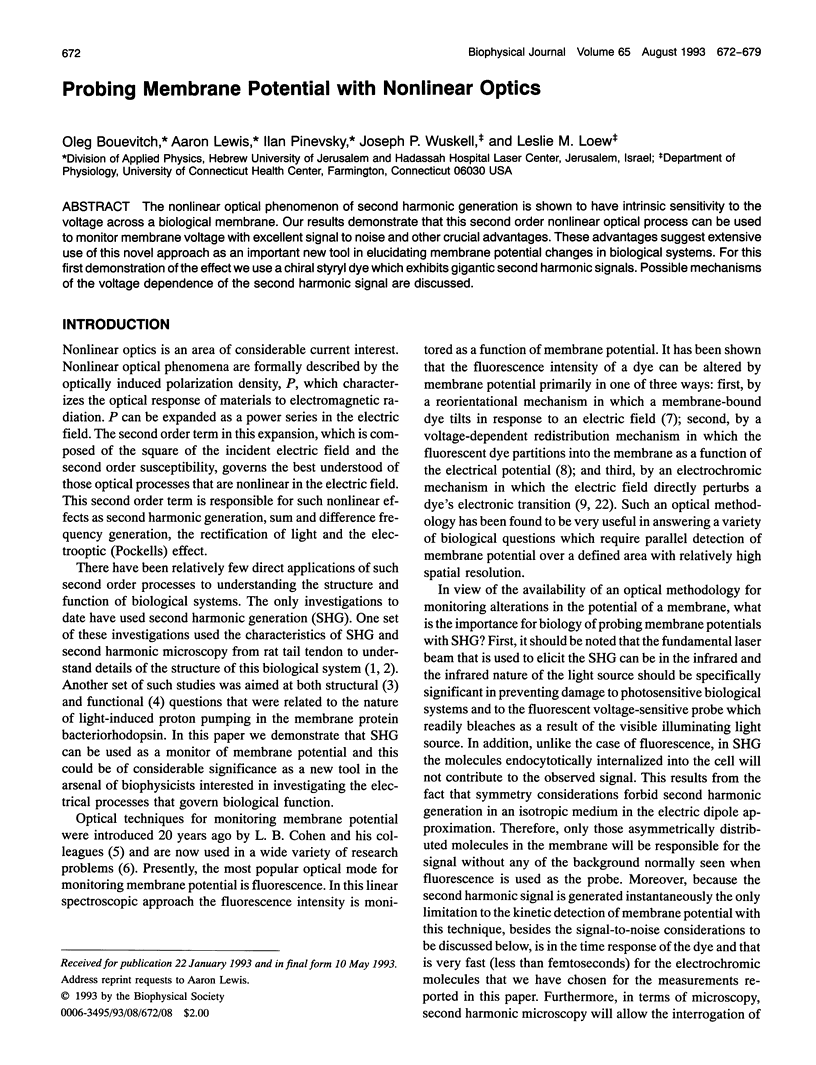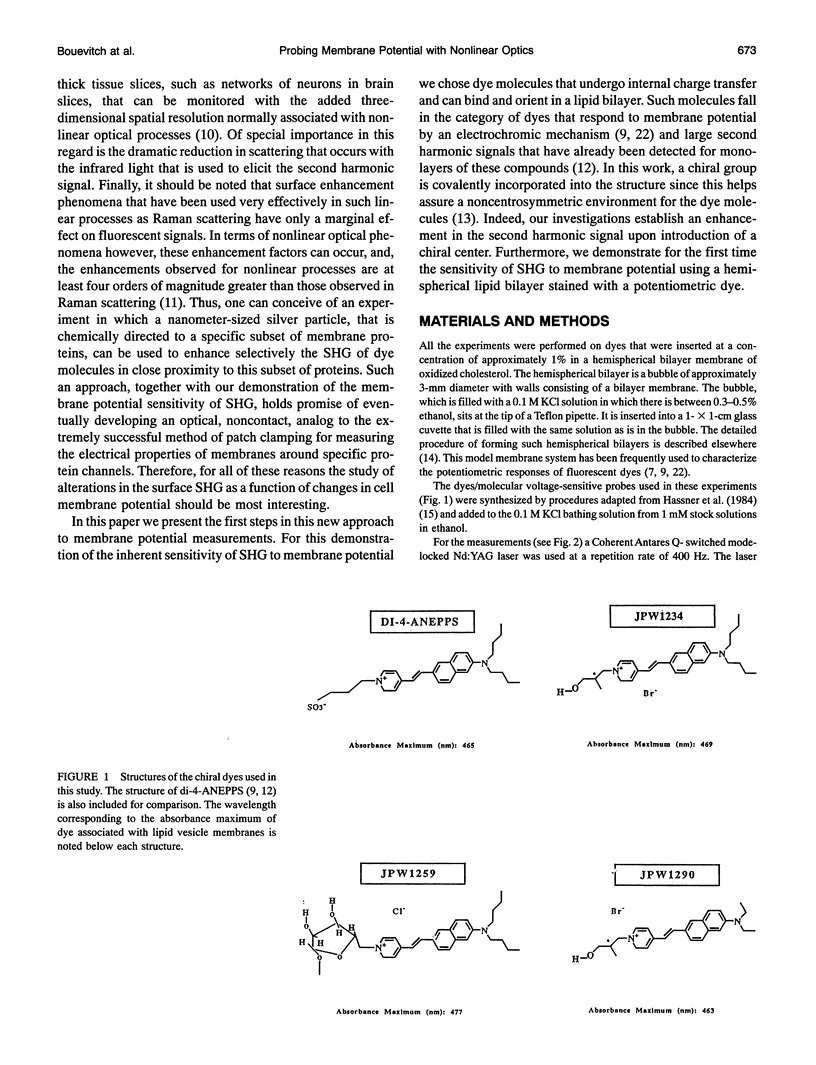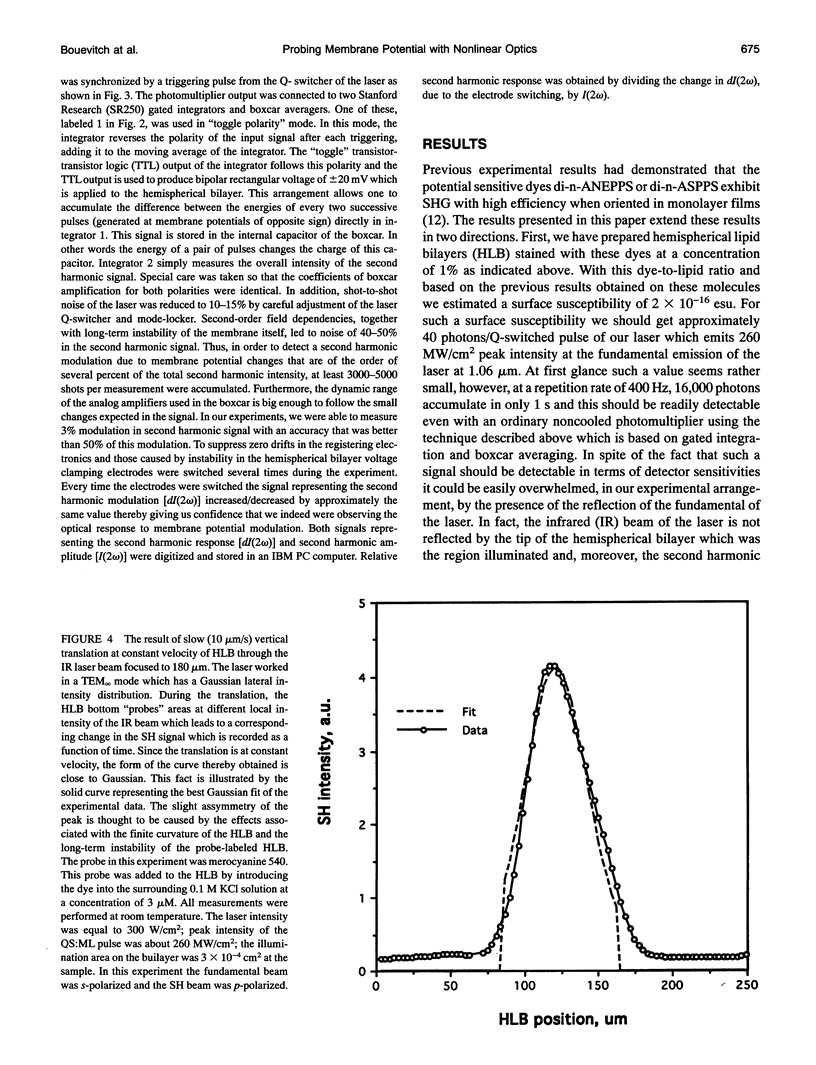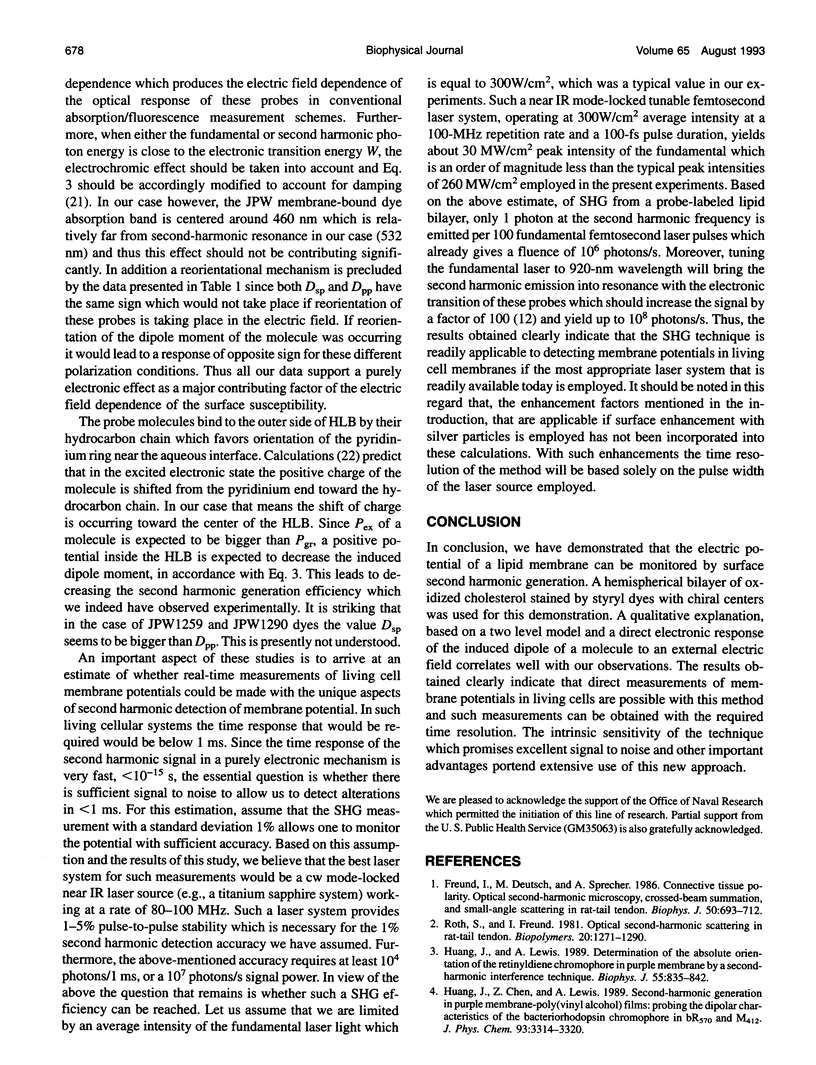Abstract
The nonlinear optical phenomenon of second harmonic generation is shown to have intrinsic sensitivity to the voltage across a biological membrane. Our results demonstrate that this second order nonlinear optical process can be used to monitor membrane voltage with excellent signal to noise and other crucial advantages. These advantages suggest extensive use of this novel approach as an important new tool in elucidating membrane potential changes in biological systems. For this first demonstration of the effect we use a chiral styryl dye which exhibits gigantic second harmonic signals. Possible mechanisms of the voltage dependence of the second harmonic signal are discussed.
Full text
PDF







Selected References
These references are in PubMed. This may not be the complete list of references from this article.
- Cohen L. B., Salzberg B. M., Davila H. V., Ross W. N., Landowne D., Waggoner A. S., Wang C. H. Changes in axon fluorescence during activity: molecular probes of membrane potential. J Membr Biol. 1974;19(1):1–36. doi: 10.1007/BF01869968. [DOI] [PubMed] [Google Scholar]
- Dragsten P. R., Webb W. W. Mechanism of the membrane potential sensitivity of the fluorescent membrane probe merocyanine 540. Biochemistry. 1978 Nov 28;17(24):5228–5240. doi: 10.1021/bi00617a024. [DOI] [PubMed] [Google Scholar]
- Fluhler E., Burnham V. G., Loew L. M. Spectra, membrane binding, and potentiometric responses of new charge shift probes. Biochemistry. 1985 Oct 8;24(21):5749–5755. doi: 10.1021/bi00342a010. [DOI] [PubMed] [Google Scholar]
- Freund I., Deutsch M., Sprecher A. Connective tissue polarity. Optical second-harmonic microscopy, crossed-beam summation, and small-angle scattering in rat-tail tendon. Biophys J. 1986 Oct;50(4):693–712. doi: 10.1016/S0006-3495(86)83510-X. [DOI] [PMC free article] [PubMed] [Google Scholar]
- Huang J. Y., Lewis A. Determination of the absolute orientation of the retinylidene chromophore in purple membrane by a second-harmonic interference technique. Biophys J. 1989 May;55(5):835–842. doi: 10.1016/S0006-3495(89)82883-8. [DOI] [PMC free article] [PubMed] [Google Scholar]
- Huang J. Y., Lewis A., Loew L. Nonlinear optical properties of potential sensitive styryl dyes. Biophys J. 1988 May;53(5):665–670. doi: 10.1016/S0006-3495(88)83147-3. [DOI] [PMC free article] [PubMed] [Google Scholar]
- Loew L. M., Bonneville G. W., Surow J. Charge shift optical probes of membrane potential. Theory. Biochemistry. 1978 Sep 19;17(19):4065–4071. doi: 10.1021/bi00612a030. [DOI] [PubMed] [Google Scholar]
- Loew L. M., Scully S., Simpson L., Waggoner A. S. Evidence for a charge-shift electrochromic mechanism in a probe of membrane potential. Nature. 1979 Oct 11;281(5731):497–499. doi: 10.1038/281497a0. [DOI] [PubMed] [Google Scholar]
- Roth S., Freund I. Optical second-harmonic scattering in rat-tail tendon. Biopolymers. 1981 Jun;20(6):1271–1290. doi: 10.1002/bip.1981.360200613. [DOI] [PubMed] [Google Scholar]
- Sims P. J., Waggoner A. S., Wang C. H., Hoffman J. F. Studies on the mechanism by which cyanine dyes measure membrane potential in red blood cells and phosphatidylcholine vesicles. Biochemistry. 1974 Jul 30;13(16):3315–3330. doi: 10.1021/bi00713a022. [DOI] [PubMed] [Google Scholar]


